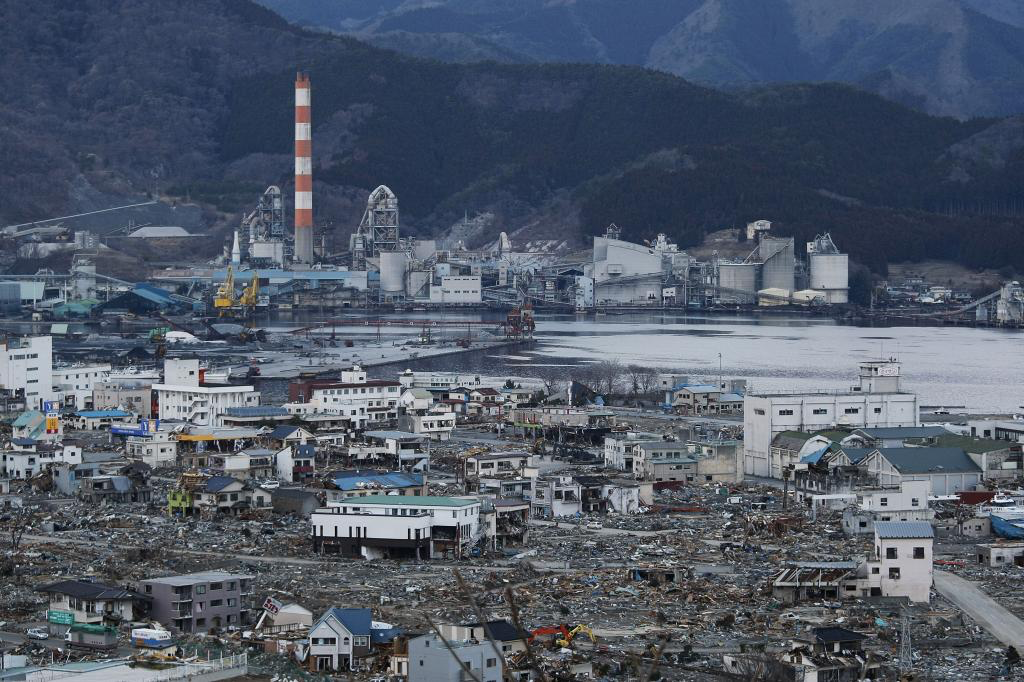
Disclaimer: Copyright infringement not intended.
Context
The upcoming release of treated, radioactively contaminated water from the Fukushima Daiichi Nuclear Power Plant into the Pacific Ocean.
About Thailand
- The Fukushima Daiichi Nuclear Power Plant in Japan will release treated, radioactively contaminated water into the Pacific Ocean from August 24, 2023.
- The decision has faced opposition from neighboring countries and concerns from the fishing industry about potential marine life impacts.
Background
- The Fukushima earthquake and tsunami in 2011 led to a nuclear disaster, with severe damage to the power plant.
- The plant requires constant cooling water to prevent further catastrophe.
- This event ranks among the world's worst nuclear accidents, following the 1986 Chernobyl disaster.
Accumulated Contaminated Water
- Over 1.3 million tonnes of radionuclide-contaminated water have been stored on-site for 12 years due to lack of space.
- Tokyo Electric Power Company (TEPCO), the plant's operator, plans to release the water into the Pacific.
Previous Incidents and Concerns
- A typhoon in 2014 damaged the Fukushima plant, leading to elevated radioactive contamination in nearby underground water.
- Japan's Nuclear Regulation Authority classified the radioactive water leakage as a "serious accident" on the International Nuclear and Radiological Event Scale.
Approval and Treatment Process
- TEPCO obtained approval from the Japanese Government and the International Atomic Energy Agency (IAEA) in July 2023, citing compliance with international standards.
- Advanced Liquid Processing System (ALPS) technology is used to treat the water, removing most radioactive materials except tritium.
Tritium Disposal and Dilution
- Tritium, a radioactive isotope of hydrogen, remains in the water after treatment.
- TEPCO further dilutes the water with seawater to meet required standards.
- More than half of Earth's free water is in the Pacific Ocean, making it the largest and deepest of the world's ocean basins.
Decommissioning and Rationale
- The Fukushima plant is being decommissioned, and releasing the treated water is deemed necessary for the complex decommissioning process.
- The Japanese government believes this step is essential despite the challenges and expenses involved.
International Opposition and Negotiations
- China has urged Japan to negotiate with neighboring countries and reconsider the decision.
- The Chinese foreign ministry expressed opposition and lodged representations against Japan's plan.
Government's Assurance and Preparedness
- Japan's Prime Minister visited the water treatment facility, emphasizing safety and transparent information dissemination.
- Authorities will initiate disposal on August 24, subject to favorable weather and sea conditions.

About Fukushima Nuclear Plant
- The Fukushima Daiichi Nuclear Power Plant is located on the east coast of Japan, approximately 220 kilometers northeast of Tokyo.
- It gained global attention due to a catastrophic incident triggered by an earthquake and tsunami in 2011.
Background and Construction
- The Fukushima plant was commissioned in the 1970s and 1980s, consisting of six boiling water reactors (BWRs).
- The reactors were designed to produce electricity through controlled nuclear fission reactions.
Catastrophic Incident of 2011
Triggering Events
- On March 11, 2011, a massive 9.0-magnitude earthquake struck Japan, causing a powerful tsunami.
- The tsunami waves, reaching up to 40 meters in height, inundated the plant's facilities.
Severe Damage and Chain Reaction
- The combination of the earthquake and tsunami led to the loss of external power and the failure of backup generators.
- Without adequate cooling, reactors experienced fuel rod overheating, causing the zirconium cladding to react with water, producing hydrogen gas.
- Hydrogen gas explosions occurred in several reactor buildings, damaging their integrity and releasing radioactive materials.
Emergency Measures and Evacuation
- Japanese authorities declared a nuclear emergency and evacuated residents from the surrounding areas.
- Attempts were made to cool the reactors using seawater and boric acid injections to control nuclear reactions.
Radiation Leakage and Contamination
- Radioactive materials, including iodine and cesium isotopes, were released into the atmosphere and ocean.
- Elevated radiation levels were detected in the plant vicinity and beyond, leading to health concerns and long-term contamination.
|
PRACTICE QUESTION
Q) Assess the impact of the Fukushima disaster on global nuclear safety policies and the lessons learned for managing nuclear energy in the context of natural disasters and environmental risks. (150 words)
|

https://www.downtoearth.org.in/news/waste/japan-to-release-treated-water-from-fukushima-nuclear-plant-from-august-24-91307




